Cataract
What is it - When and how it occurs?
A cataract is the "clouding" of the lens of the eye, which is transparent under normal conditions (fig.1,2). This “clouding” leads to blurry vision since the lens physiologically helps to focus light on the retina.
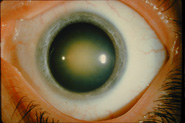 |
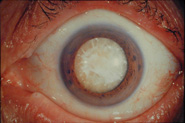 |
Most of the times, it involves patients over 50 years of age and it is considered a rather expected outcome due to the aging of our natural lens. There are cases though of the pathological cataracts as well as i.e.:
• in diabetic patients, where it may occur much earlier
or
• as a side effect of medications or radiation or even
• after a serious eye injury.
What are the symptoms of a cataract?
The clouding, in practical terms, means that our vision gradually gets worse and the following frequent problems occur:
- reduction of our distant central vision
- intense sensitivity to light and glare
- feeling that we see less vivid and bright colors
- frequent changes in eyeglass prescription, that are abnormal to the patient’s age
When and how is it treated?
A cataract is treated only surgically, under the appropriate conditions. A patient after consultation with an ophthalmologist takes the decision to proceed with the cataract surgery, keeping in mind though that:
- the reduction of vision in combination with his/her needs determine the need of surgery and that
- the theory of "let the cataract ripen" is no longer valid since it leads to very advanced and not easily treatable cataracts.
Thus if a cataract causes functional problems in our vision, it is treated at an early stage with phacoemulsification.
Cataract Surgery / Phacoemulsification
It is the removal of cataract by the modern ultrasound method. The cloudy lens of the eye is removed in a painless and highly effective way (fig.3, 4) and it is replaced by an intraocular lens, that is chosen ahead in order to suit our patient's needs (fig.5). The patient does not have to stay in the hospital and the vision recovery period is relatively short, following the necessary post-operational treatment by the doctor.
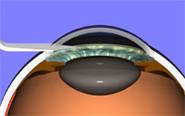 |
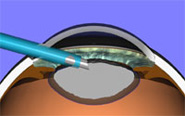 |
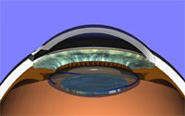 |
In the rare case of an overripe cataract (hyper mature), an eye specialist can proceed with the older method, the extracapsular cataract extraction, which is the removal of the entire lens - which cannot be 'crushed' - by making a bigger corneal incision that requires use of sutures. This method has a higher risk of complications and a longer vision recovery period.
Therefore, early diagnosis and treatment of the cataract is essential. It reduces the risks for possible complications improving significantly a patient’s vision and quality of life.
Digital content is courtesy of Prof.Oliver Findl www.findl.at
Digital content is courtesy of Alcon Iberia
Digital content: Credit to National Eye Institute, National Institutes of Health.




